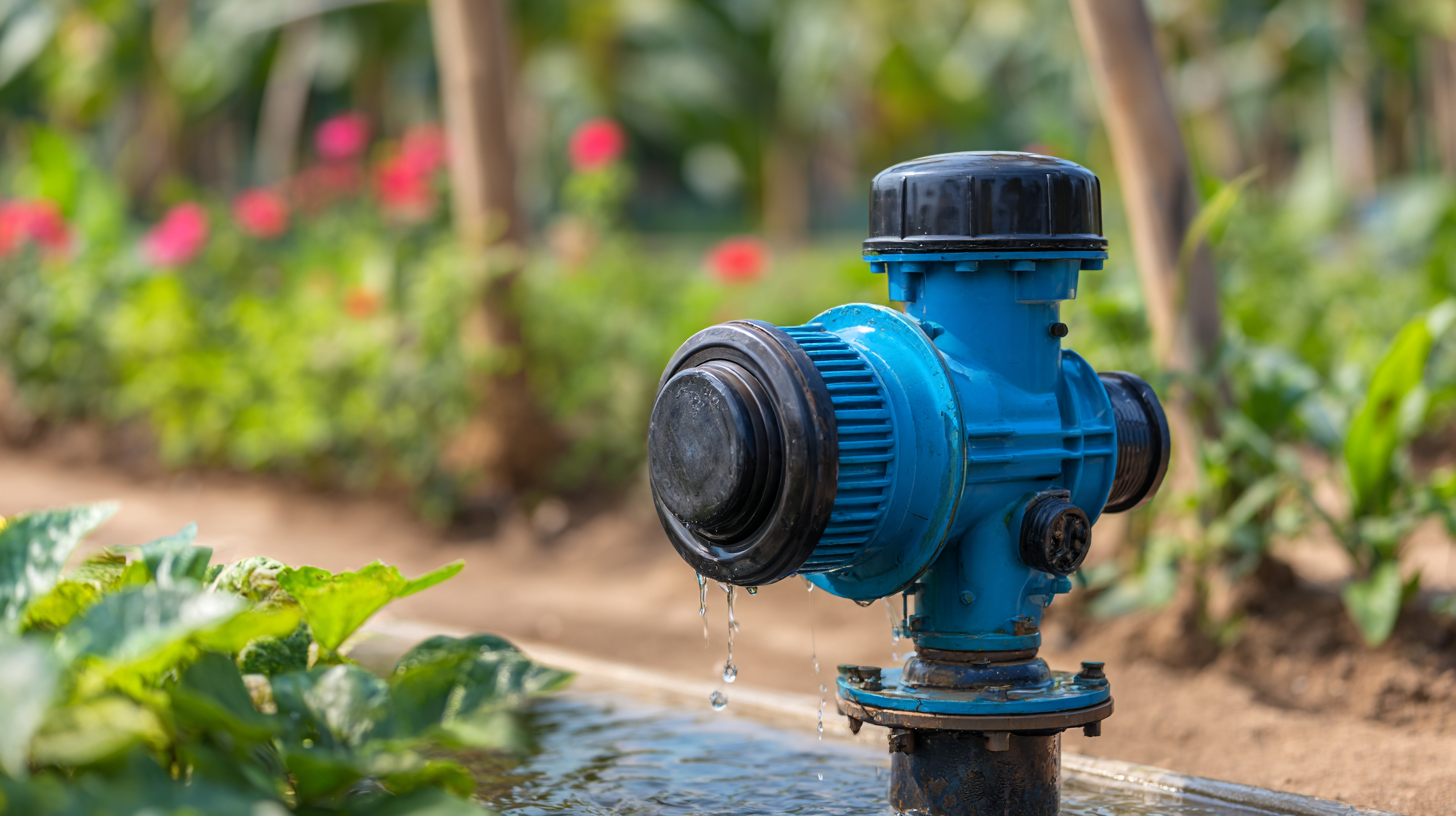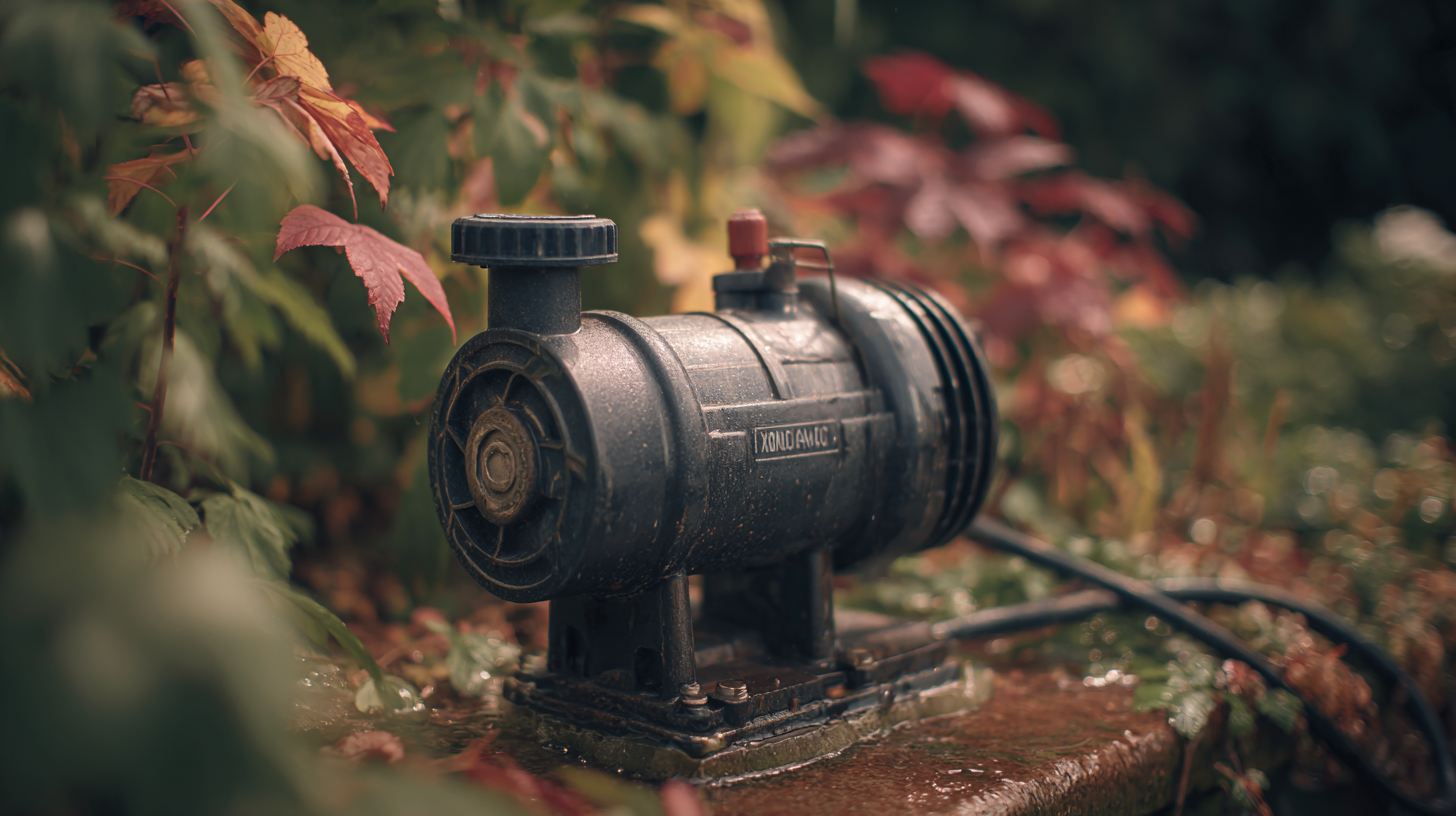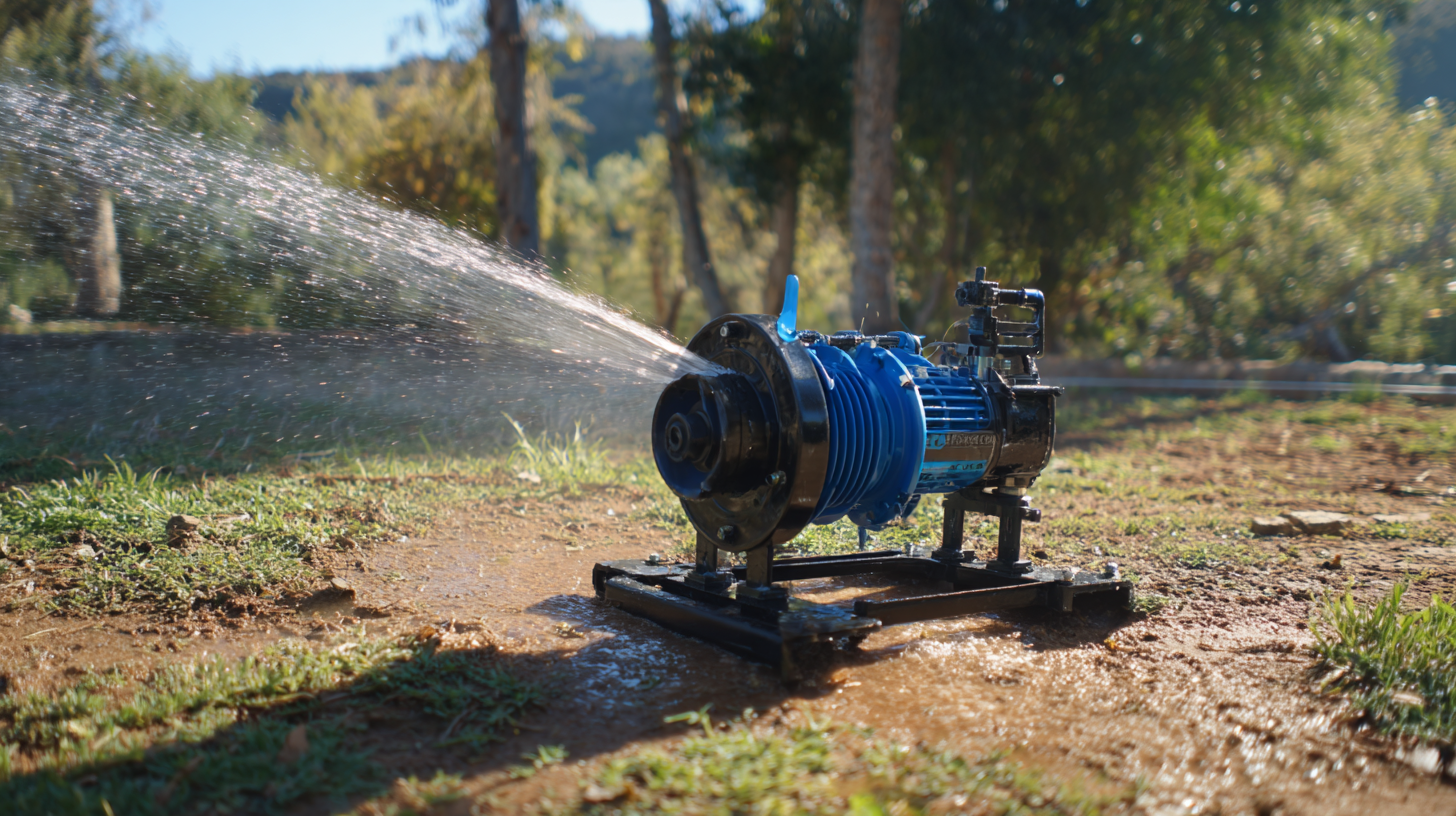How to Choose the Right 24v Water Pump for Your Irrigation Needs
Choosing the right 24v water pump for your irrigation needs is crucial for optimizing agricultural efficiency and conserving water resources. According to a report by the American Society of Agricultural and Biological Engineers, proper irrigation practices, including the selection of suitable water pumps, can increase crop yield by up to 30%. With the growing emphasis on sustainable farming techniques, the demand for efficient irrigation systems, including 24v water pumps, has surged.

These pumps are particularly favored for their energy efficiency and adaptability in various agricultural settings. In fact, recent market analyses indicate a projected growth rate of 5.2% in the global water pump market, as farmers seek innovative solutions to enhance productivity while minimizing environmental impact. Understanding the specific requirements of your irrigation system is paramount for making an informed choice in the ever-evolving landscape of agricultural technology.
Understanding the Importance of Choosing the Right 24v Water Pump for Efficient Irrigation
Choosing the right 24v water pump for your irrigation needs is essential for ensuring efficient water delivery and maximizing crop yield. Selecting an appropriate pump significantly impacts water distribution, energy consumption, and overall system performance. As the market for solar-powered water pumps continues to grow, with projections reaching $191.7 million by 2033, understanding your irrigation requirements becomes more critical than ever.
When evaluating your options, consider pump size and flow rate first. A pump that is too small won't meet your irrigation demands, while an oversized pump can lead to excessive energy use. Assess the specific needs of your crops and the area to be irrigated to find the ideal specifications.
Additionally, look for features that enhance efficiency. Pumps designed with energy-saving technologies can reduce operational costs and lower your carbon footprint. Incorporating adjustable speed drives can also help optimize performance based on varying water needs throughout the season. By carefully assessing these factors, you can choose a 24v water pump that not only meets your immediate irrigation needs but also contributes to sustainable practices in your farming approach.
How to Choose the Right 24v Water Pump for Your Irrigation Needs
| Pump Type | Flow Rate (GPH) | Max Head (Feet) | Power Consumption (Watts) | Application |
|---|---|---|---|---|
| Submersible | 2000 | 30 | 300 | General Irrigation |
| Surface | 1500 | 25 | 250 | Field Irrigation |
| Drum Pump | 1200 | 20 | 200 | Container Irrigation |
| Diaphragm | 1000 | 15 | 150 | Drip Irrigation |
| Centrifugal | 3000 | 35 | 400 | Large Scale Irrigation |
Key Factors to Consider When Selecting a 24v Water Pump for Agricultural Applications
 When selecting a 24v water pump for agricultural applications, several key factors should be considered to ensure optimal performance and efficiency. First and foremost, it’s crucial to assess the flow rate and pressure requirements of your irrigation system. Different crops and soil types may require varying amounts of water; thus, understanding what you need will help you choose a pump that meets your specific demands. A pump with inadequate flow rate may result in poor crop hydration, while excessive pressure could lead to soil erosion or damage to your irrigation infrastructure.
When selecting a 24v water pump for agricultural applications, several key factors should be considered to ensure optimal performance and efficiency. First and foremost, it’s crucial to assess the flow rate and pressure requirements of your irrigation system. Different crops and soil types may require varying amounts of water; thus, understanding what you need will help you choose a pump that meets your specific demands. A pump with inadequate flow rate may result in poor crop hydration, while excessive pressure could lead to soil erosion or damage to your irrigation infrastructure.
Another important factor is the pump's construction and materials. Given the harsh conditions often present in agricultural environments, selecting a durable pump capable of withstanding elements such as dirt, UV exposure, and moisture is paramount. Pumps made from corrosion-resistant materials, such as stainless steel or high-grade plastics, can greatly enhance longevity. Additionally, consider the energy efficiency of the pump. A 24v model not only reduces operational costs but also promotes sustainable farming practices, making it vital to choose a pump that balances power and energy consumption effectively.
Comparing Different Types of 24v Water Pumps: Submersible vs. Surface Pumps
When choosing the right 24V water pump for your irrigation needs, understanding the differences between submersible and surface pumps is crucial.
 Submersible pumps are designed to be submerged in water, making them ideal for deep wells or sources where water must be drawn from below. Their design allows for efficient operation as they push water to the surface, requiring less energy compared to surface pumps. However, maintenance can be challenging since they must be removed from the water source for servicing.
Submersible pumps are designed to be submerged in water, making them ideal for deep wells or sources where water must be drawn from below. Their design allows for efficient operation as they push water to the surface, requiring less energy compared to surface pumps. However, maintenance can be challenging since they must be removed from the water source for servicing.
On the other hand, surface pumps are positioned above ground and draw water from a well or reservoir. They are typically easier to maintain since they are accessible without the need for diving into the water. Surface pumps may be less efficient for deep water sources but can perform exceptionally well in applications with shallow water levels. Evaluating the specific requirements of your irrigation system—as well as considering recent advancements and trends in electric water pumps—will help you select the most appropriate option tailored to your irrigation needs.
Analyzing Flow Rate and Pressure Requirements for Optimal Irrigation Performance
When selecting a 24v water pump for irrigation, understanding the flow rate and pressure requirements is crucial for achieving optimal performance. According to the American Society of Agricultural and Biological Engineers, the ideal flow rate for effective irrigation typically ranges from 1.0 to 5.0 gallons per minute (GPM) per acre, depending on the type of crops and their water needs. By calculating the total area to be irrigated, farmers can determine the required flow rate that will satisfy their plants while avoiding water waste.
Pressure requirements also play a significant role in pump selection. Most irrigation systems operate optimally within a pressure range of 20 to 60 psi (pounds per square inch), as outlined in the Irrigation Association's guidelines. Insufficient pressure can lead to uneven water distribution, while excessive pressure may cause potential damage to the irrigation infrastructure. For example, a drip irrigation system commonly requires a lower pressure to function effectively, while a sprinkler system needs higher pressure levels for proper coverage. Thus, evaluating both flow rate and pressure can help farmers select a 24v water pump that meets their specific irrigation demands efficiently.
Evaluating Energy Efficiency and Cost-Effectiveness of 24v Water Pumps in Irrigation Systems
When evaluating energy efficiency and cost-effectiveness in 24v water pumps for irrigation systems, it's crucial to look beyond the initial purchase price. One of the first factors to consider is the pump's power consumption relative to its output. High-efficiency models can save you money in the long run by reducing electricity costs. Look for pumps that carry Energy Star ratings or similar certifications, as these can indicate better performance and efficiency.
Tip: Before making a purchase, calculate the total operating cost over the pump's expected lifespan. This calculation should include not just the cost of electricity but also maintenance expenses and potential repairs. Doing so will give you a clearer picture of the total investment.
Another important aspect is to assess the hydrostatic pressure and flow rate requirements of your irrigation system. A pump that operates well within the optimal range will not only perform better but also use energy more efficiently. It’s essential to match pump specifications with your system's needs to prevent wastage and ensure effective water delivery.
Tip: Consult with an irrigation expert to analyze your system's requirements accurately. This can help you choose a pump that not only meets your irrigation needs but also maximizes energy efficiency.
Related Posts
-

Unlocking Efficiency: The Advantages of 24V Water Pumps for Modern Applications
-

Exploring Innovative Chemical Pump Alternatives for Industrial Applications
-

What is the Functionality of a Water Tank Pump in Modern Water Systems
-

Optimizing Efficiency: Essential Strategies for Chemical Transfer Pump Performance in Industry
-

Exploring Innovative Alternatives to Chemical Pumps for Enhanced Efficiency and Reliability
-

How to Choose the Right Water Tank Pump for Your Needs